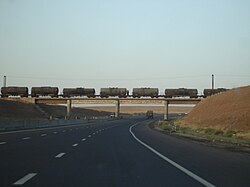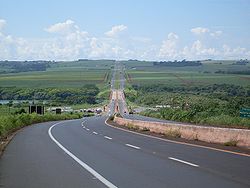Asia



 Bahrain: ṭarīq siyār (طريق سيار)
Bahrain: ṭarīq siyār (طريق سيار)  Brunei: Lebuhraya
Brunei: Lebuhraya  China: Gaosu Gōnglù (高速公路)
China: Gaosu Gōnglù (高速公路)  Hong Kong: Highways
Hong Kong: Highways  India: Expressways
India: Expressways  Indonesia: Toll Road/Jalan Tol (all tolled)
Indonesia: Toll Road/Jalan Tol (all tolled) Iran: Āzādrāh (آزادراه)
Iran: Āzādrāh (آزادراه)  Iraq: ṭarīq siyār (طريق سيار)
Iraq: ṭarīq siyār (طريق سيار)  Israel: kvish mahir (כביש מהיר)
Israel: kvish mahir (כביש מהיר)  Japan: Kōsokudōro (高速道路)
Japan: Kōsokudōro (高速道路)  Jordan: ṭarīq siyār (طريق سيار)
Jordan: ṭarīq siyār (طريق سيار)  Kazakhstan: Avtomagistral (Автомагистраль)
Kazakhstan: Avtomagistral (Автомагистраль)  Kuwait: ṭarīq siyār (طريق سيار)
Kuwait: ṭarīq siyār (طريق سيار)  Lebanon: Autoroutes
Lebanon: Autoroutes  Malaysia: Lebuhraya (all tolled)
Malaysia: Lebuhraya (all tolled) Myanmar: Expressway (အမြန်လမ်း) (all tolled)
Myanmar: Expressway (အမြန်လမ်း) (all tolled) North Korea: Kosokdoro (고속도로)
North Korea: Kosokdoro (고속도로)  Oman: ṭarīq siyār (طريق سيار)
Oman: ṭarīq siyār (طريق سيار)  Pakistan: Motorways/Maḥrak rāst (محرک راست)
Pakistan: Motorways/Maḥrak rāst (محرک راست)  Philippines: Expressways (all tolled)
Philippines: Expressways (all tolled) Qatar: ṭarīq siyār (طريق سيار)
Qatar: ṭarīq siyār (طريق سيار)  Saudi Arabia: ṭarīq siyār (طريق سيار)
Saudi Arabia: ṭarīq siyār (طريق سيار)  Singapore: Expressways (all tolled)
Singapore: Expressways (all tolled) South Korea: Gosokdoro (고속도로)
South Korea: Gosokdoro (고속도로)  Sri Lanka: Expressways (all tolled)
Sri Lanka: Expressways (all tolled) Syria: ṭarīq siyār (طريق سيار)
Syria: ṭarīq siyār (طريق سيار)  Taiwan: Gaosu Gōnglù (高速公路)
Taiwan: Gaosu Gōnglù (高速公路)  Thailand: Thangluang phiset (ทางหลวงพิเศษ)
Thailand: Thangluang phiset (ทางหลวงพิเศษ)  United Arab Emirates: ṭarīq siyār (طريق سيار)
United Arab Emirates: ṭarīq siyār (طريق سيار)  Vietnam: Đường cao tốc
Vietnam: Đường cao tốc






